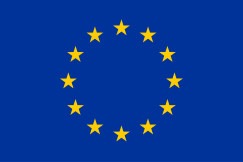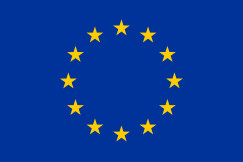Legislation
01 June 2025
Guidelines for State aid in the agricultural and forestry sectors and in rural areas
Legislation
01 June 2025
1. Healthy, balanced and sustainable diets for all European consumers
2. Prevention and reduction of food loss and waste
3. A climate - neutral food chain in Europe by 2050
+4 more
Login / create an account to be able to react
-
31

The Guidelines for State aid in the agricultural and forestry sectors and in rural areas are part of the European Commission's initiative to revise State aid rules, ensuring compatibility with the internal market as per the EU Treaty.
These guidelines cover a range of supports, including rural development, crisis management, and environmental commitments, while promoting transparency and proportionality to avoid distorting competition. They also address aid for natural disasters, aligning with specific treaty provisions.
Editorial team
European Commission - DG COMP
Topics
EU-27
Academic / Research and VET Institutions
Business Support Organisation
Company with 250 or more employees
Cluster Organisations
Consumer Organisations
Cultural and Heritage Organisations
Destination Management & Marketing Organisations
EU Institutions
Financial Institutions and Investors
Industry Associations and Chambers of Commerce
International Organisations
Local Authorities
Media / Journalist Organisations
National authorities
Networks and Federations / Confederations
NGOs / Non-profits
Notified Bodies
Regional Authorities
SMEs (a company with less than 250 employees)
Social Economy Entity
Trade Unions
Other
-
CoC aspirational objectives
-
-
1. Healthy, balanced and sustainable diets for all European consumers
-
2. Prevention and reduction of food loss and waste
-
3. A climate - neutral food chain in Europe by 2050
-
4. An optimised circular and resource-efficient food chain in Europe
-
5. Sustained, inclusive and sustainable economic growth, employment and decent work for all
-
6. Sustainable value creation in the European food supply chain through partnership
-
7. Sustainable sourcing in food supply chains
-
Share
The Guidelines for State aid in the agricultural and forestry sectors and in rural areas form a key part of the European Commission's efforts to revise State aid rules in these areas. These guidelines establish the criteria used by the Commission to evaluate whether State aid in these sectors complies with Article 107(3) of the Treaty on the Functioning of the European Union, ensuring compatibility with the internal market. They also specify conditions under which aid to address damage from natural disasters or exceptional events aligns with Article 107(2)(b) of the treaty, allowing it to be deemed compatible.
The guidelines ensure that aid schemes and individual aid in the agricultural sector are in sync with the common agricultural policy (CAP) rules, offering national support for agricultural initiatives, crisis management, and promotional activities, as well as for the forestry sector and rural areas.
To meet internal market regulations, aid must stimulate economic activities, influence beneficiary behaviour positively, and adhere to EU legal standards, all while avoiding adverse effects on trade or competition. Transparency and proportionality are essential, with aid designed to effectively address market failures through the Commission's balancing test.
The guidelines specify eligibility criteria, maximum aid amounts, and eligible costs across various aid categories. In agriculture, the focus is on investments, start-ups, environmental actions, risk management, and more. Forestry aid targets ecosystem resilience, infrastructure, and conservation, while rural area support includes fundamental services and community projects.
The Commission authorises aid schemes with limited durations and may mandate independent evaluations for those of significant size or novelty. Member States must submit annual reports, maintain detailed records for a decade, and adhere to potential guideline revisions by the Commission.
Related regulations:
Guidelines for State aid in the agricultural and forestry sectors and in rural areas
Regulation (EU) 2022/2472 declaring certain categories of aid in the agricultural and forestry sectors and in rural areas compatible with the internal market
Regulation (EU) No 1408/2013 on the application of Articles 107 and 108 of the Treaty on the Functioning of the European Union to de minimis aid in the agriculture sector
Comments (0)
See also
De Minimis Regulation
- Categories
- 2. Prevention and reduction of food loss and waste 3. A climate - neutral food chain in Europe by 2050 4. An optimised circular and resource-efficient food chain in Europe +3 more
Guidelines for sustainability agreements in agriculture
- Categories
- 2. Prevention and reduction of food loss and waste 3. A climate - neutral food chain in Europe by 2050 4. An optimised circular and resource-efficient food chain in Europe +3 more
Agricultural Block Exemption Regulation (ABER)
- Categories
- 2. Prevention and reduction of food loss and waste 3. A climate - neutral food chain in Europe by 2050 4. An optimised circular and resource-efficient food chain in Europe +3 more




